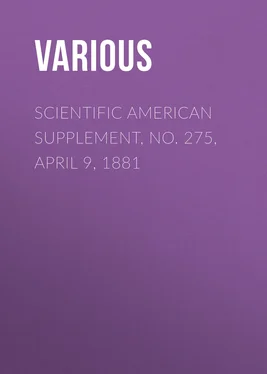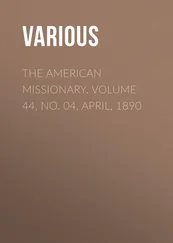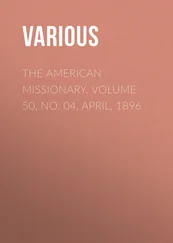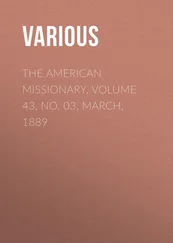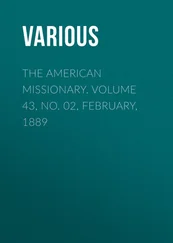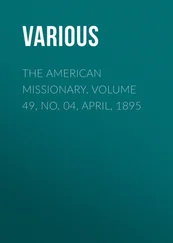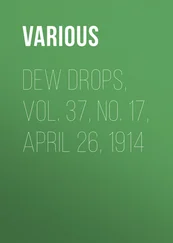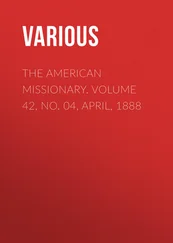Various - Scientific American Supplement, No. 275, April 9, 1881
Здесь есть возможность читать онлайн «Various - Scientific American Supplement, No. 275, April 9, 1881» — ознакомительный отрывок электронной книги совершенно бесплатно, а после прочтения отрывка купить полную версию. В некоторых случаях можно слушать аудио, скачать через торрент в формате fb2 и присутствует краткое содержание. Жанр: foreign_antique, periodic, foreign_edu, на английском языке. Описание произведения, (предисловие) а так же отзывы посетителей доступны на портале библиотеки ЛибКат.
- Название:Scientific American Supplement, No. 275, April 9, 1881
- Автор:
- Жанр:
- Год:неизвестен
- ISBN:нет данных
- Рейтинг книги:4 / 5. Голосов: 1
-
Избранное:Добавить в избранное
- Отзывы:
-
Ваша оценка:
- 80
- 1
- 2
- 3
- 4
- 5
Scientific American Supplement, No. 275, April 9, 1881: краткое содержание, описание и аннотация
Предлагаем к чтению аннотацию, описание, краткое содержание или предисловие (зависит от того, что написал сам автор книги «Scientific American Supplement, No. 275, April 9, 1881»). Если вы не нашли необходимую информацию о книге — напишите в комментариях, мы постараемся отыскать её.
Scientific American Supplement, No. 275, April 9, 1881 — читать онлайн ознакомительный отрывок
Ниже представлен текст книги, разбитый по страницам. Система сохранения места последней прочитанной страницы, позволяет с удобством читать онлайн бесплатно книгу «Scientific American Supplement, No. 275, April 9, 1881», без необходимости каждый раз заново искать на чём Вы остановились. Поставьте закладку, и сможете в любой момент перейти на страницу, на которой закончили чтение.
Интервал:
Закладка:
Various
Scientific American Supplement, No. 275, April 9, 1881
WHEAT AND WHEAT BREAD
In consequence of the interest that has been recently excited on the subject of bread reform, we have, says the London Miller , translated the interesting contribution of H. Mège-Mouriès to the Imperial and Central Society of Agriculture of France, and subsequently published in a separate form in 1860, on "Wheat and Wheat Bread," with the illustration prepared by the author for the contribution. The author says: "I repeat in this pamphlet the principal facts put forth in the notes issued by me, and in the reports furnished by Mr. Chevreul to the Academy of Science, from 1853 up to 1860."
The study of the structure of the wheat berry, its chemical composition, its alimentary value, its preservation, etc., is not alone of interest to science, agriculture, and industry, but it is worthy of attracting the attention of governments, for this study, in its connection to political economy, is bound up with the fate and the prosperity of nations. Wheat has been cultivated from time immemorial. At first it was roughly crushed and consumed in the form of a thick soup, or in cakes baked on an ordinary hearth. Many centuries before the Christian era the Egyptians were acquainted with the means of making fermented or leavened bread; afterwards this practice spread into Greece, and it is found in esteem at Rome two centuries B.C.; from Rome the new method was introduced among the Gauls, and it is found to-day to exist almost the same as it was practiced at that period, with the exception, of course, of the considerable improvements introduced in the baking and grinding.
Since the fortunate idea was formed of transforming the wheat into bread, this grain has always produced white bread, and dark or brown bread, from which the conclusion was drawn that it must necessarily make white bread and brown bread; on the other hand, the flours, mixed with bran, made a brownish, doughy, and badly risen bread, and it was therefore concluded that the bran, by its color, produced this inferior bread. From this error, accepted as a truth, the most contradictory opinions of the most opposite processes have arisen, which are repeated at the present day in the art of separating as completely as possible all the tissues of the wheat, and of extracting from the grain only 70 per cent of flour fit for making white bread. It is, however, difficult for the observer to admit that a small quantity of the thin yellow envelope can, by a simple mingling with the crumb of the loaf, color it brown, and it is still more difficult to admit that the actual presence of these envelopes can without decomposition render bread doughy, badly raised, sticky, and incapable of swelling in water. On the other hand, although some distinguished chemists deny or exalt the nutritive properties of bran, agriculturists, taking practical observation as proof, attribute to that portion of the grain a physiological action which has nothing in common with plastic alimentation, and prove that animals weakened by a too long usage of dry fodder, are restored to health by the use of bran, which only seems to act by its presence, since the greater portion of it, as already demonstrated by Mr. Poggiale, is passed through with the excrement.
With these opinions, apparently so opposed, it evidently results that there is an unknown factor at the bottom of the question; it is the nature of this factor I wish to find out, and it was after the discovery that I was able to explain the nature of brown bread, and its role in the alimentation of animals. We have then to examine the causes of the production of brown bread, to state why white bread kills animals fed exclusively on it, while bread mixed with bran makes them live. We have to explain the phenomena of panification, the operations of grinding, and to explain the means of preparing a bread more economical and more favorable to health. To explain this question clearly and briefly we must first be acquainted with the various substances forming the berry, their nature, their position, and their properties. This we shall do with the aid of the illustration given.
SECTION OF A GRAIN OF WHEAT MAGNIFIED.
EXPLANATION OF DIAGRAM.

ANATOMICAL STRUCTURE AND CHEMICAL COMPOSITION OF WHEAT
The figure represents the longitudinal cut of a grain of wheat; it was made by taking, with the aid of the microscope and of photography, the drawing of a large quantity of fragments, which, joined together at last, produced the figure of the entire cut. These multiplied results were necessary to appreciate the insertion of the teguments and their nature in every part of the berry; in this long and difficult work I have been aided by the co-operation of Mr. Bertsch, who, as is known, has discovered a means of fixing rapidly by photography any image from the microscope. I must state, in the first place, that even in 1837 Mr. Payen studied and published the structure and the composition of a fragment of a grain of wheat; that this learned chemist, whose authority in such matters is known, perfectly described the envelopes or coverings, and indicated the presence of various immediate principles (especially of azote, fatty and mineral substances which fill up the range of contiguous cells between them and the periphery of the perisperm, to the exclusion of the gluten and the starchy granules), as well as to the mode of insertion of the granules of starch in the gluten contained in the cells, with narrow divisions from the perisperm, and in such a manner that up to the point of working indicated by the figure 1 this study was complete. However, I have been obliged to recommence it, to study the special facts bearing on the alimentary question, and I must say that all the results obtained by Mr. Bertsch, Mr. Trécul, and myself agree with those given by Mr. Payen.
ENVELOPES OF THE BERRY
No. 1 represents a superficial side of the crease.
No. 2 indicates the epidermis or cuticle. This covering is extremely light, and offers nothing remarkable; 100 lb. of wheat contain ½ lb. of it.
No. 3 indicates the epicarp. This envelope is distinguished by a double row of long and pointed vessels; it is, like the first one, very light and without action; 100 lb. of wheat contain 1 lb. of it.
No. 4 represents the endocarp, or last tegument of the berry; the sarcocarp, which should be found between the numbers 2 and 3, no longer exists, having been absorbed. The endocarp is remarkable by its row of round and regular cells, which appear in the cut like a continuous string of beads; 100 lb. of wheat contain 1½ lb. of it.
These three envelopes are colorless, light, and spongy; their elementary composition is that of straw; they are easily removed besides with the aid of damp and friction. This property has given rise to an operation called decortication, the results of which we shall examine later on from an industrial point of view. The whole of the envelopes of the berry of wheat amount to 3 lb. in 100 lb. of wheat.
ENVELOPES AND TISSUES OF THE BERRY PROPER
No. 5 indicates the testa or episperm. This external tegument of the berry is closer than the preceding ones; it contains in the very small cells two coloring matters, the one of a palish yellow, the other of an orange yellow, and according as the one or the other matter predominates, the wheat is of a more or less intense yellow color; hence come all the varieties of wheat known in commerce as white, reddish, or red wheats. Under this tegument is found a very thin, colorless membrane, which, with the testa or episperm, forms two per cent. of the weight of the wheat.
Читать дальшеИнтервал:
Закладка:
Похожие книги на «Scientific American Supplement, No. 275, April 9, 1881»
Представляем Вашему вниманию похожие книги на «Scientific American Supplement, No. 275, April 9, 1881» списком для выбора. Мы отобрали схожую по названию и смыслу литературу в надежде предоставить читателям больше вариантов отыскать новые, интересные, ещё непрочитанные произведения.
Обсуждение, отзывы о книге «Scientific American Supplement, No. 275, April 9, 1881» и просто собственные мнения читателей. Оставьте ваши комментарии, напишите, что Вы думаете о произведении, его смысле или главных героях. Укажите что конкретно понравилось, а что нет, и почему Вы так считаете.
